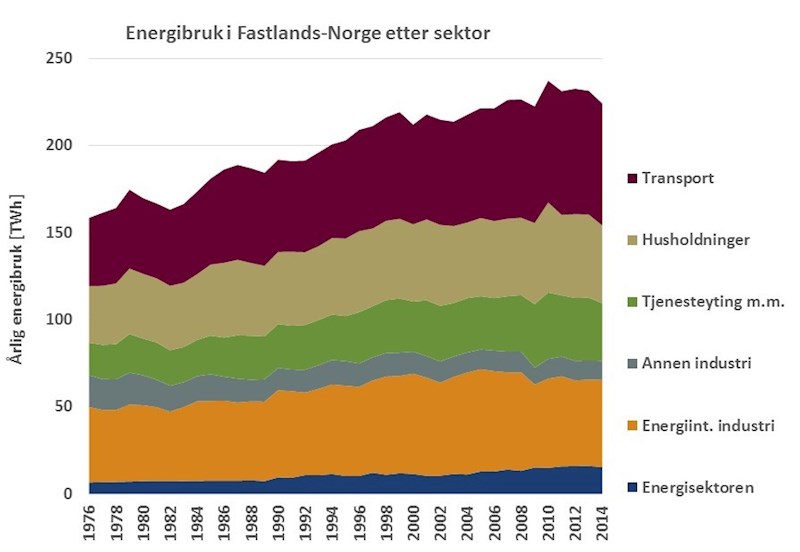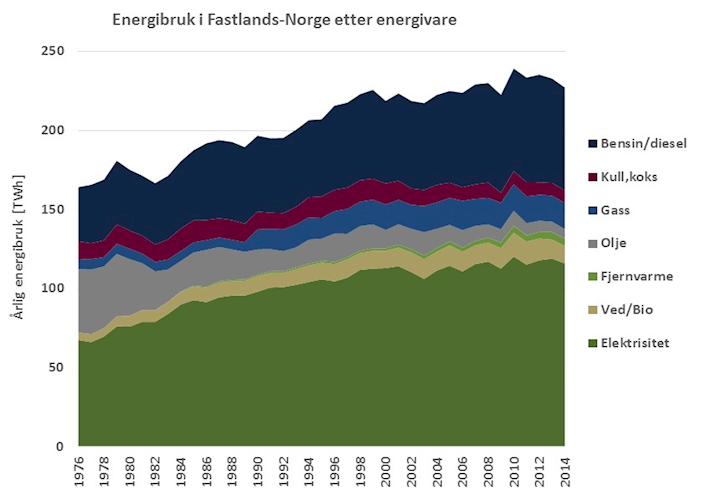
Due to strong growth in the number of vehicles in Norway, energy consumption for transport has doubled since the mid 1970s and is in 2014 the highest energy sector in mainland Norway. Within the energy sector, new landfills within the petroleum sector have contributed to the energy consumption more than doubled since the 1970s. Service industries are a sector of strong growth over the last 30 years and this has led to a significant increase in energy consumption.
Energy consumption in mainland Norway reached a preliminary peak in 2010 and has since slowed down. This is due to both lower energy consumption in homes and commercial buildings due to mild climate, decline in the wood processing industry and the decline in energy consumption for transport in the last two years.
Electricity is the most widely used energy product in mainland Norway, with a consumption of 117 TWh in 2014. Fossil fuels for transport are together the second largest group of energy products. In total, around 65 TWh gasoline, diesel, marine gas oil and jet parafin were used for transport in 2014. Something that is a decrease of more than 2 TWh since 2012. A clear trend since the 1970s is that the use of oil has been reduced while use of electricity, district heating and bioenergy has increased. Household consumption, however, has declined.

